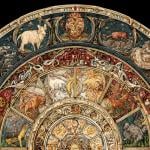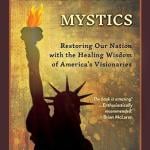
Reading chapter 1 of Earl Doherty’s book Jesus: Neither God Nor Man was unlike both such types of past experiences. It was more like the sensation of having entered The Twilight Zone, a parallel universe where you are told that things you doubt to be true cannot be doubted, while things that you (and, you thought, most other people) conclude are likely are in fact supposedly impossible to believe.
I will set aside the fact that this chapter is largely an argument from silence, since we are promised that that will be the focus of the next chapter. Indeed, at the beginning of part 1, Doherty does a good job of outlining what lies in store, so that one can reserve judgment in some cases and await a fuller treatment of a particular subject. I still hope at some point in the future I will have time to do a survey of other letters to see how often it is typical for ancient authors to mention the humanity of figures with whom they can safely assume the recipients will be familiar.
For now, I will simply point out what I have said before – the alleged “silence” is not as complete as Doherty seems to think. The references we have to Jesus being born, bleeding and dying as a result of crucifixion, and even being raised from the dead, all represent things that as a rule happened to human beings or, in the case of resurrection, were expected to happen to humans. As for the question of why the focus in the epistles is pretty much exclusively on Jesus’ death and resurrection, rather than his teaching or exorcisms or anything else, the answer has been given by traditional scholarship and remains satisfactory. The death of the Messiah at the hands of foreign overlords required explanation (and Doherty shows himself to be unaware of the work that has been done to explore the background in Jewish thought that provided a framework within which to make sense of this – the martyr theology given expression in 2 Maccabees and elaborated even more in 4 Maccabees, as well as the traditions related to the Akedah echoed in early Christian language applied to Jesus’ death). It was natural for this to become a major focus, since it required attention and explanation. As for the resurrection, the belief that an end-times event had occurred, marking the inauguration of the age to come, was bound to become a focus of attention. Does it really require explanation that the supposed vindication of Jesus beyond death by his becoming the first human raised from the dead into the life of the age to come would come to center stage and overshadow his teachings?
It should also be mentioned here that Doherty makes an unpersuasive analogy between where the preaching in Acts begins – with the life of Jesus – and where the epistles begin – with the heavenly Lord. To anyone who actually pays attention to the audiences in view in each instance, a simple explanation presents itself: those who received Paul’s letters were part of Christian communities, and the way they became part of those communities was by believing the basic introductory things they were told about Jesus. Doherty says more than once that this solution is inadequate, but he neither shows it to be inadequate, nor offers a better one.
The bulk of this chapter consists of claims about what is supposedly unimaginable on the traditional scenario – and it is here that Doherty’s writing most clearly crosses the border from the merely unpersuasive to the bizarrely surreal. Doherty says more than once that it is inconceivable that a group of Jews could have deified Jesus in the way traditionally thought. Here’s a selection from a key passage on p.22:
Is it possible to conceive of circumstances in which the followers of such a man, a humble preacher whose deeds – critical scholars are now agreed – could not possibly have matched those of the Gospel story, would have elevated him to such a cosmic level? Though men, such as Roman emperors, could be called divine and “sons of God,” Jesus’ degree of elevation would have been virtually unprecedented in the entire history of religion.
It is especially inconceivable among Jews, who had an obsession against associating anything human with God…The idea that a man was a literal part of God would have been met by almost any Jew with horror and apoplexy.
Yet we are to believe not only that Jews were led to identify a crucified criminal with the ancient God of Abraham, but that they went about the empire and practically overnight converted huge numbers of other Jews to the same outrageous – and thoroughly blasphemous – proposition.
A great deal of work has been done on the subject of early Christology and monotheism, and I’ll say more about that in a moment. But let me focus first on what struck me most strongly as I read this chapter: It isn’t clear how if at all mythicism mitigates the problem even if Doherty has rightly identified it. How does positing that a celestial figure is turned into a crucified human sidestep the issue, any more than the view that a crucified human was deified? How does separating the history of Christianity into the separate strands Doherty proposes in any way change the fact that, sooner or later, we are still dealing with the strange attractiveness of the seemingly blasphemous proclamation of a crucified Messiah and a crucified God? Explaining how we got there in plausible terms is indeed an important issue, but at present it is not at all obvious that mythicism does a better job of accounting for what happened plausibly, than more mainstream reconstructions of the evolution of early Christianity and its beliefs.
The way out of the apparent paradox, which at the very least mythicism seems to solve no better than historicism, is to rethink early Christology. When mythicists accuse scholars of clinging to too many traditional Christian views, or reading later orthodoxy back into earlier sources, they seem not to grasp what this means, and so perhaps they are simply echoing what scholars themselves often say. If there is an area in which it has proven particularly difficult to avoid reading later orthodoxy back into early sources, it is the ideas of pre-existence and the Trinity. And as we have already seen in this survey of Doherty’s book, mythicism does no better even than the worst (if I may put it that way) of more mainstream New Testament scholarship. But there have long been major voices in mainstream scholarship calling for a rethinking of how the language used in New Testament sources relates to later doctrines. I treat that subject in more detail in my book The Only True God and so will direct those who may be interested there, where they can find one example (by no means the only one) of how New Testament Christological statements can be understood in a way that sets them squarely within the context of first-century Jewish monotheism.
In the present context, let me just offer the following few observations. First, the character of first-century Jewish monotheism is such that it has been possible for some scholars, rightly or wrongly, to deny that it deserves to be called monotheism at all. Doherty seems at times to be aware of this, mentioning as he does the ubiquitous appearance of a supreme mediator figure. It isn’t clear why Doherty expects that his own view, which will presumably have a divine savior who is a “part of God” crucified by the powers in the celestial realm, to be less controversial than the idea that God exalted a crucified human to the status of his second in command. Nor is it clear why mythical ideas akin to stories about Osiris and Attis would have been able to get under the radar of Jewish monotheism in what he calls the “Jerusalem” strand of tradition that flowed into Christianity, while Christian ideas as understood by mainstream scholarship supposedly could not. But perhaps those questions will be addressed in a later chapter.
Another puzzle piece that is relevant to this, and which Doherty has as yet shown no interest in doing justice to, is the phenomenon of Jewish Christianity in the post-New Testament period. Somehow those later Jewish Christians produced Gospels, unaware that they had the option of bypassing that genre and it’s problematic identification of a central celestial mediator with Jesus of Nazareth, and/or attribution of its ethical teaching to a crucified Messiah, depending on which of Doherty’s strands it supposedly emerged from. Somehow later Gentile Christians regarded Jewish Christians as odd because they observed the Jewish Law, not because they held vies anything like those described by Doherty. And when centuries later Jewish Christians produced the Pseudo-Clementine literature, they would show that what set them apart is not whether they have Jesus of Nazareth as part of their system, nor whether they exalt him using language similar to the highest Christological language in the New Testament, but the fact that they understood that language the way many New Testament scholars think the New Testament authors themselves understood it – in terms of agency, in a manner compatible with Jewish monotheism. And so apparently the key forms of Jewish Christianity that Doherty claims to detect in or behind New Testament Writings left no impression in the one place we might most expect to find them, namely Jewish Christianity itself.
Making sense of Christian origins is indeed like putting together a puzzle. And we are indeed missing many pieces we wish we had. But I think the reason Earl Doherty constructs Christian origins as he does is that he is ignoring some of the pieces we do have – evidence about the character of Jewish monotheism, evidence about Messianic beliefs, and evidence about later Jewish Christianity, to name but a few.












